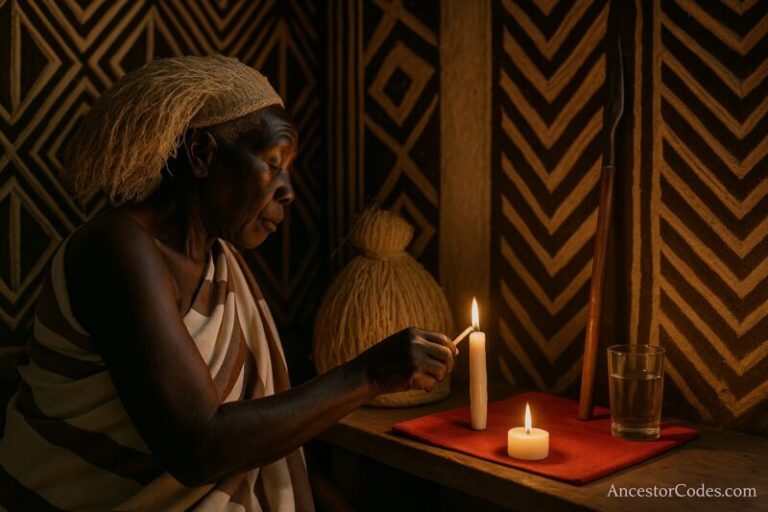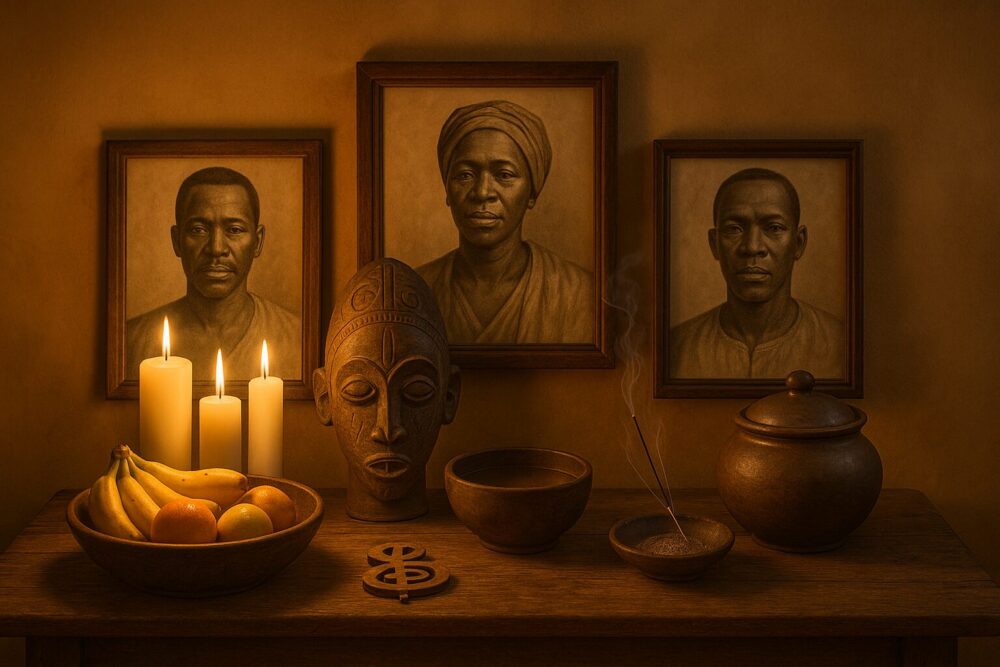
Your Altar, Your Ancestral Signal
Build it with love, not fear.
An ancestral altar is a living invitation yelling to your Ancestors: “I see you. I now remember.” all you need is just a quiet spot, clear intent, and a willing heart. Even a humble shelf can hold a mighty spirit. Start where you are, use what you have, and open the doorway today. You don’t need a temple or pricey tools to start.
“A river that forgets its source will dry up.” — Yoruba proverb
Table of Contents ( What you will learn)
- What an Ancestral Altar Is—and Why It Matters
- Where to Place It: Choosing Sacred Space
- What to Include: Symbols, Offerings, Energy
- How to Activate and Maintain the Connection
- Action Box: Build Yours in Five Minutes
- FAQ: Straight Answers to Common Fears
- Closing Word: A Blessing and Invitation
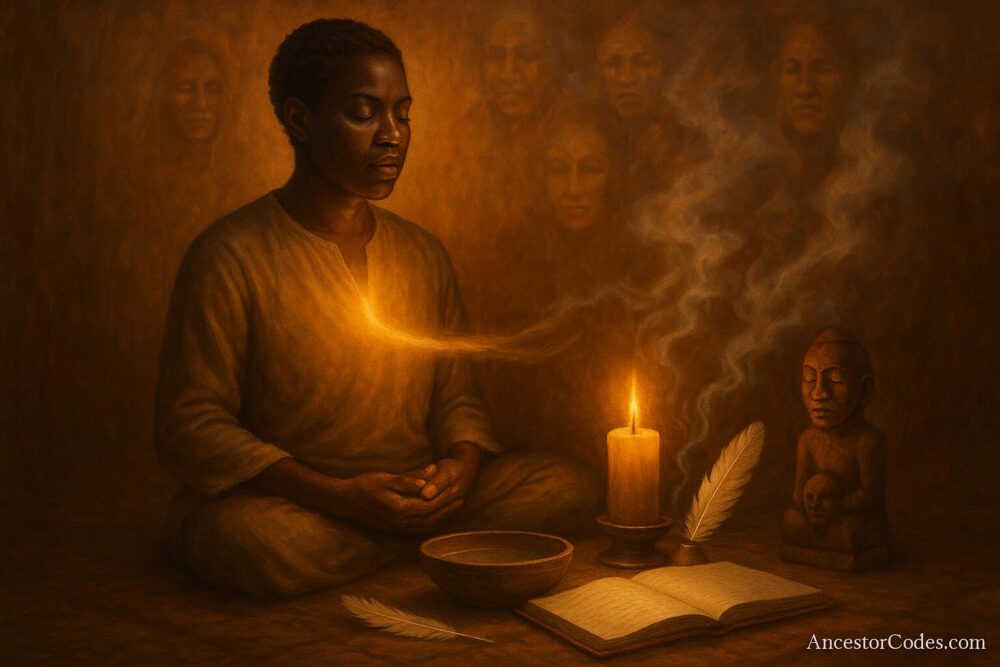
1. What an Ancestral Altar Is—and Why It Matters
An ancestral altar is a spiritual home base, a sacred space where human meets spirit. It calls in the power and ability of those who lived before you, known and unknown, and grounds your mission in living memory.
Whether you are healing deep spiritual wounds, generational trauma, claiming cultural pride, or simply craving guidance, altar reminds you that: you didn’t arrive here alone. You carry entire bloodline inside your body, and the altar is a visible sacred place to honor them.
All you need is Sincere voice and open mind to welcome their presence.
Key Takeaway: Your altar is a permanent anchor of remembrance, clarity, and ancestral power.
2. Where to Place It: Choosing Sacred Space
All you need is a sacred spot you can treat with care and consistency.
- A small side table catching morning light
- The top shelf of a bookcase
- A box or drawer if you privacy is compromised
- A cloth covered bedside you [ if needed]

Choose a safe place where you can sit still, speak aloud, and listen. Let it feel like a portal, not a display. Keep it tidy; dust dismisses energy while order invites it.
“When the roots remain, the tree will sprout again.” — Igbo proverb
Key Takeaway: Any space can become sacred once you call it and respect it always with presence.
3. What to Include: Symbols, Offerings, Energy
The altar speaks through meaningful elements, not expensive decoration. Begin it simple:
| Core Item | Significance |
|---|---|
| White cloth | Purity, peace, stillness |
| Glass of water | Spirit medium, clarity, life |
| Candle or oil lamp | Light, guidance, communication |
| Photo, name, or heirloom | Lineage connection |
| Natural element (stone, shell, feather, soil) | Grounding, earth memory |
Optional but powerful additions
- Palm wine, fruits, or cooked food offerings
- Cowries or coins for energy exchange
- Bell, rattle, or drum to call their attention
- Personal journal to record dreams and whispers
Speak aloud with intention as you offer each item. your voice wakes the space better than any incense.
Key Takeaway: Build with meaning and intention, not every materials you see, each item you add must earn its place through pure intention.
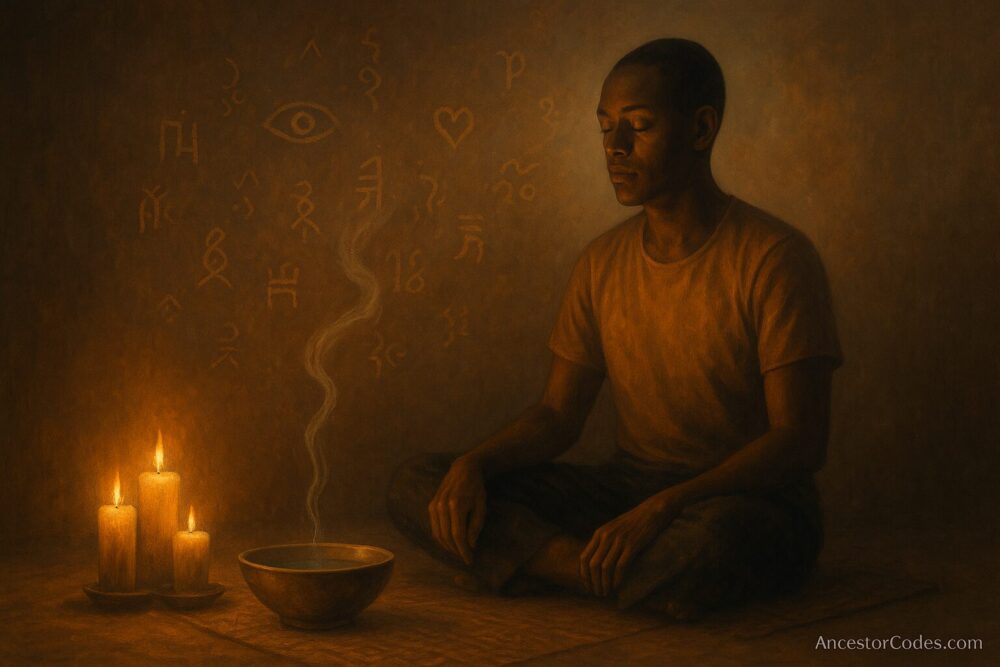
4. How to Activate and Maintain the Connection
First Activation
- Sit calmly with bare feet on the floor.
- Light the candle with intention.
- Pour water with both hands; state your full name, your local must come first with surname.
- Say:
“My Ancestors and good spirits of my linage, i come with clean hands, and good heart, I honor you. Guide me.” - Breath and listen calmly with pure intention. close with gratitude.
Ongoing Maintenance
- Refresh water daily or weekly, just as spirit leads.
- Speak to them daily, thank, ask and reflect.
- Offer food or drink on birthdays, new/full moons, or whenever gratitude rises, as sprit leads.
- Sit in silence. Messages often comes in silence, arrive as dreams, intuitive nudges, or sudden peace with clarity.
“Mtaka cha mungu hutoa chake.” — Swahili proverb
(Whoever seeks a gift from God must first give something.)Key Takeaway: Consistency turns the altar from décor into dialogue—show up and the guidance sharpens.
Action Box – Five-Minute Altar Setup
- Clear a surface, wipe it down with pure intention.
- Lay a cloth (white if possible).
- Place a glass of water and one candle.
- Add a lineage symbol (any), photo, name, heirloom.
- Say aloud as long as you wish:
“I open this space in love and truth. I remember my source.”
Do this often with pure intention. The door opens at your first sincere hello.
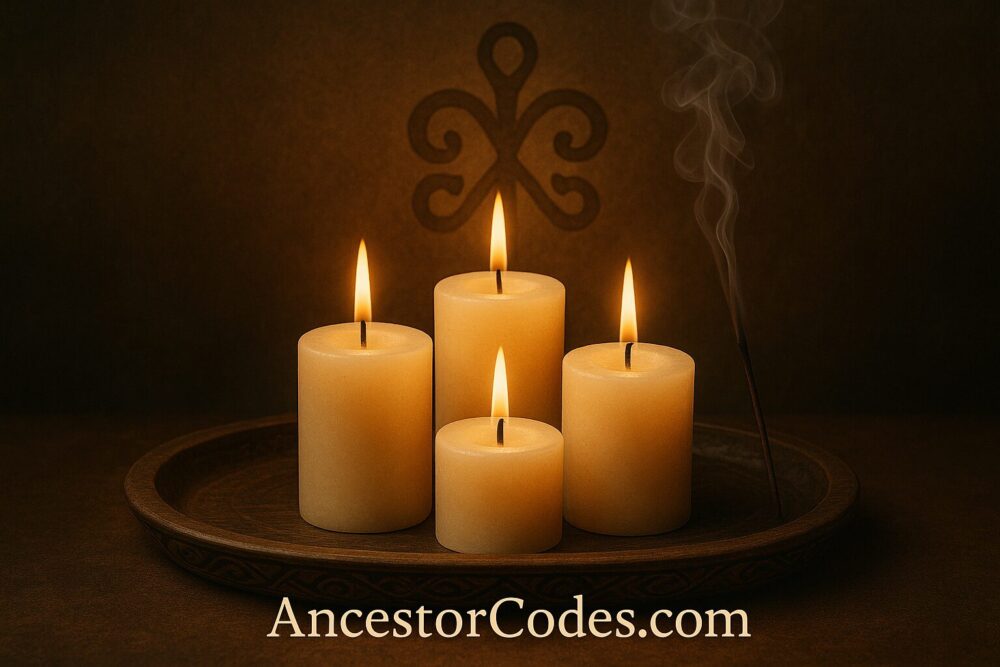
FAQ – Straight Answers
Q1. Isn’t this against my religion?
Honoring ancestors predates formal religions. It is remembrance, not worship. we reverence them. Most faiths hold space for family memorials.
Q2. What if I don’t know my family history?
Call on “those who made me possible, who works this earth before me.” Connection exists beyond names.
Q3. What if people judge me?
Your altar needs truth, not applause. A box altar works if privacy is vital, be authentic.
Q4. I feel nothing, am I doing it wrong?
Spirit whispers first, no perfection only pure intention. Keep showing up. Many feel shifts through dreams, symbols, sudden clarity.
Q5. Can children or partners join?
Yes if they approach with respect. Otherwise, protect the altar’s energy and keep it personal. but don’t force anyone to join.
Closing Word
“Inkaba yam ixhama, ingaphi na?” — Xhosa proverb
(Where can the navel string lie forgotten?)
Let this wisdom root inside you. Build your altar not as decoration but as a drumbeat the ancestors can follow.
Ready to begin? Comment below or share this with a friend who needs the reminder. you might save a soul today.;
Similar Post
Build a Rwandan Warrior Altar: INTORE
Why the Ancestors Spoke in Symbols
Ancestral Voice Within


